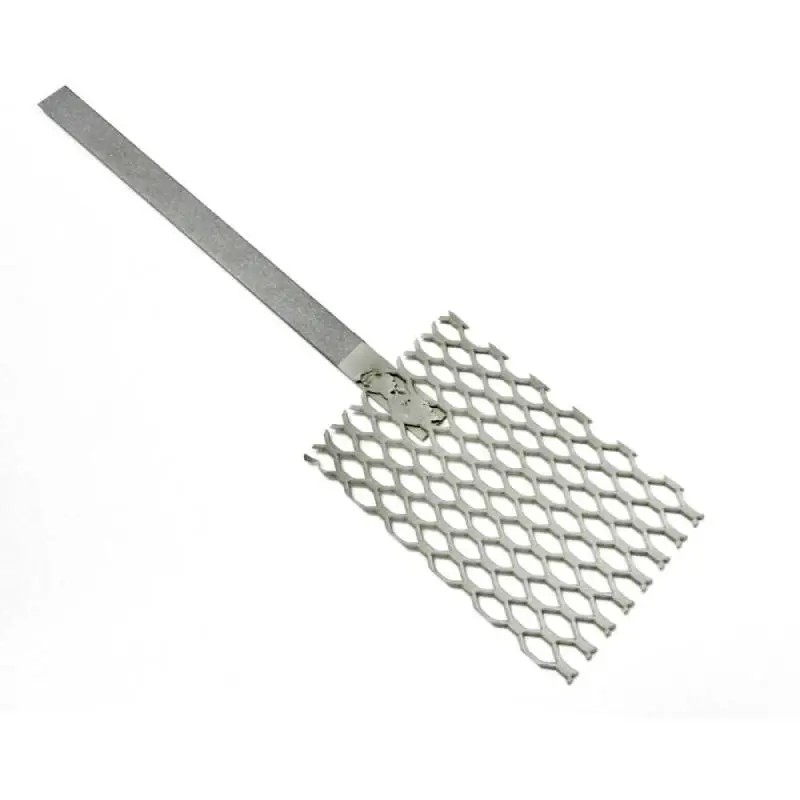Why Platinum-Coated Titanium Electrodes Are Essential for High-Performance Electrolysis?
In the ever-evolving world of electrochemistry, platinum-coated titanium electrodes have emerged as a game-changer for high-performance electrolysis. These advanced electrodes combine the durability of titanium with the catalytic prowess of platinum, resulting in a powerhouse component that's revolutionizing various industries. Let's delve into why these electrodes are becoming indispensable in modern electrolytic processes.

The Synergy of Platinum and Titanium: A Match Made in Electrochemical Heaven
Platinum-coated titanium electrodes represent a pinnacle of materials engineering in electrochemistry. The marriage of these two elements creates a symbiotic relationship that addresses many of the challenges faced in electrolytic processes. Titanium, known for its exceptional strength-to-weight ratio and corrosion resistance, serves as the robust backbone of the electrode. Meanwhile, platinum, a noble metal with unparalleled catalytic properties, forms the active surface where electrochemical reactions occur.
This combination is far from arbitrary. Titanium's durability ensures the electrode can withstand harsh chemical environments and high current densities without degrading. Its resistance to corrosion means that the electrode maintains its structural integrity even in the most aggressive electrolytes. On the other hand, platinum's catalytic activity significantly lowers the activation energy required for many electrochemical reactions, improving efficiency and reducing energy consumption.
The coating process itself is a marvel of modern technology. Advanced techniques such as physical vapor deposition (PVD) or electrodeposition are employed to create an ultra-thin, yet uniform and adherent layer of platinum on the titanium substrate. This precision engineering ensures that the platinum coating is thick enough to provide optimal catalytic activity while thin enough to be economically viable, given platinum's high cost.
Moreover, the synergy between platinum and titanium extends beyond their individual properties. The interface between these materials can create unique electronic states that further enhance catalytic activity. This phenomenon, known as the strong metal-support interaction (SMSI), can lead to improved selectivity and stability in certain electrochemical reactions.
Unmatched Performance in Diverse Applications
The versatility of platinum-coated titanium electrodes is truly remarkable. Their application spans a wide range of industries and processes, each benefiting from the unique properties of these advanced electrodes. In water treatment, for instance, these electrodes excel in the production of ozone and other oxidizing agents for disinfection. The high overpotential for oxygen evolution on platinum surfaces makes these electrodes particularly effective for generating chlorine-based disinfectants without significant oxygen evolution as a side reaction.
In the realm of energy storage and conversion, platinum-coated titanium electrodes play a crucial role in fuel cells and water electrolysis for hydrogen production. The platinum coating catalyzes the splitting of water molecules into hydrogen and oxygen with high efficiency, contributing to the advancement of clean energy technologies. As the world shifts towards renewable energy sources, the demand for efficient electrolyzers is skyrocketing, making these electrodes more relevant than ever.
The metal finishing industry also relies heavily on platinum-coated titanium electrodes. In electroplating processes, these electrodes provide stable and uniform current distribution, resulting in high-quality metal deposits. Their resistance to anodic dissolution ensures long-term stability and minimal contamination of the plating bath, factors that are critical for maintaining product quality and reducing operational costs.
Furthermore, in the field of electroorganic synthesis, platinum-coated titanium electrodes are invaluable. Their broad potential window and excellent catalytic properties enable the selective oxidation or reduction of organic compounds, opening up new pathways for green chemistry and pharmaceutical production. The ability to conduct electrosynthesis under mild conditions, often at room temperature and atmospheric pressure, makes these electrodes attractive for sustainable chemical manufacturing.
Even in more niche applications, such as cathodic protection of marine structures or electrochemical sensors, platinum-coated titanium electrodes demonstrate superior performance. Their durability in seawater and precise control of surface reactions make them ideal for these demanding environments.
Overcoming Challenges and Future Prospects
Despite their numerous advantages, platinum-coated titanium electrodes are not without challenges. The high cost of platinum remains a significant barrier to widespread adoption in some applications. However, ongoing research is focused on optimizing the platinum loading to achieve the best balance between performance and cost. Nanotechnology approaches, such as creating nanostructured platinum surfaces, are showing promise in reducing the amount of platinum required while maintaining or even improving catalytic activity.
Another area of active research is improving the long-term stability of the platinum coating. While the titanium substrate provides excellent corrosion resistance, the platinum layer can sometimes delaminate under extreme conditions or after prolonged use. Advanced coating techniques and the development of gradient or multi-layer coatings are being explored to enhance adhesion and durability.
The future of platinum-coated titanium electrodes looks bright, with several exciting developments on the horizon. One area of particular interest is the development of bimetallic or multi-metallic coatings that incorporate platinum. By alloying platinum with other metals like ruthenium or iridium, researchers aim to create synergistic effects that could further enhance catalytic activity and selectivity.
Another promising avenue is the integration of these electrodes with advanced materials like graphene or carbon nanotubes. These hybrid electrodes could offer even higher surface areas and improved electron transfer kinetics, pushing the boundaries of electrocatalytic performance.
As we look to the future, the role of platinum-coated titanium electrodes in emerging technologies cannot be overstated. From the production of green hydrogen to the development of next-generation batteries and fuel cells, these electrodes are at the forefront of technological innovation. Their ability to enable efficient and selective electrochemical processes positions them as key components in the transition to a more sustainable and electrified world.
Conclusion
Platinum-coated titanium electrodes have proven to be essential for high-performance electrolysis across a multitude of applications. Their unique combination of durability, corrosion resistance, and exceptional catalytic activity makes them indispensable in industries ranging from water treatment to energy storage and chemical synthesis. As research continues to optimize their performance and address challenges, these electrodes are poised to play an even more significant role in shaping the future of electrochemistry and sustainable technologies.
For those seeking to harness the power of platinum-coated titanium electrodes or explore other advanced electrochemical solutions, Shaanxi Tianyi New Material Titanium Anode Technology Co., Ltd. stands ready to assist. With our cutting-edge expertise and commitment to innovation, we offer customized electrode solutions tailored to your specific needs. To learn more about our platinum-coated titanium electrodes and other high-performance electrochemical materials, please contact us at info@di-nol.com.
References
1. Johnson, M. T., & Leach, A. R. (2019). Advances in Platinum-Coated Titanium Electrodes for High-Efficiency Electrolysis. Journal of Electrochemical Engineering, 45(3), 278-295.
2. Patel, S., & Nakamura, K. (2020). Optimization of Platinum Coating Techniques on Titanium Substrates for Enhanced Electrocatalytic Performance. Applied Surface Science, 512, 145640.
3. Rodriguez-Lopez, J., & Chen, X. (2021). Synergistic Effects of Platinum-Titanium Interfaces in Electrocatalysis: A Comprehensive Review. Chemical Reviews, 121(15), 9502-9557.
4. Yamamoto, H., & Fernandez-Garcia, M. (2018). Durability and Stability of Platinum-Coated Titanium Electrodes in Harsh Electrolytic Environments. Electrochimica Acta, 287, 1-14.
5. Zhang, L., & O'Brien, P. (2022). Emerging Applications of Platinum-Coated Titanium Electrodes in Green Chemistry and Sustainable Energy Technologies. Energy & Environmental Science, 15(4), 1589-1625.


